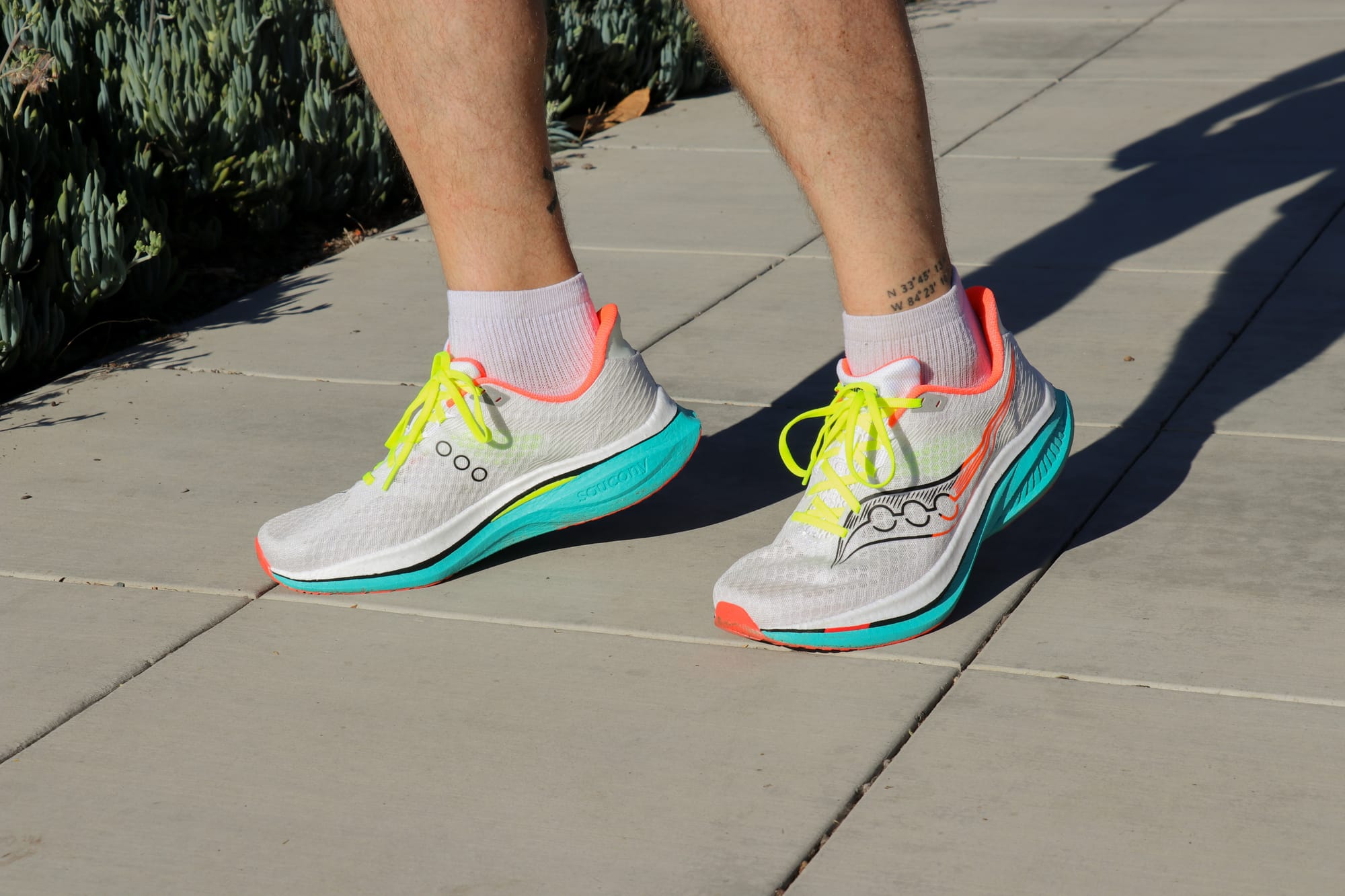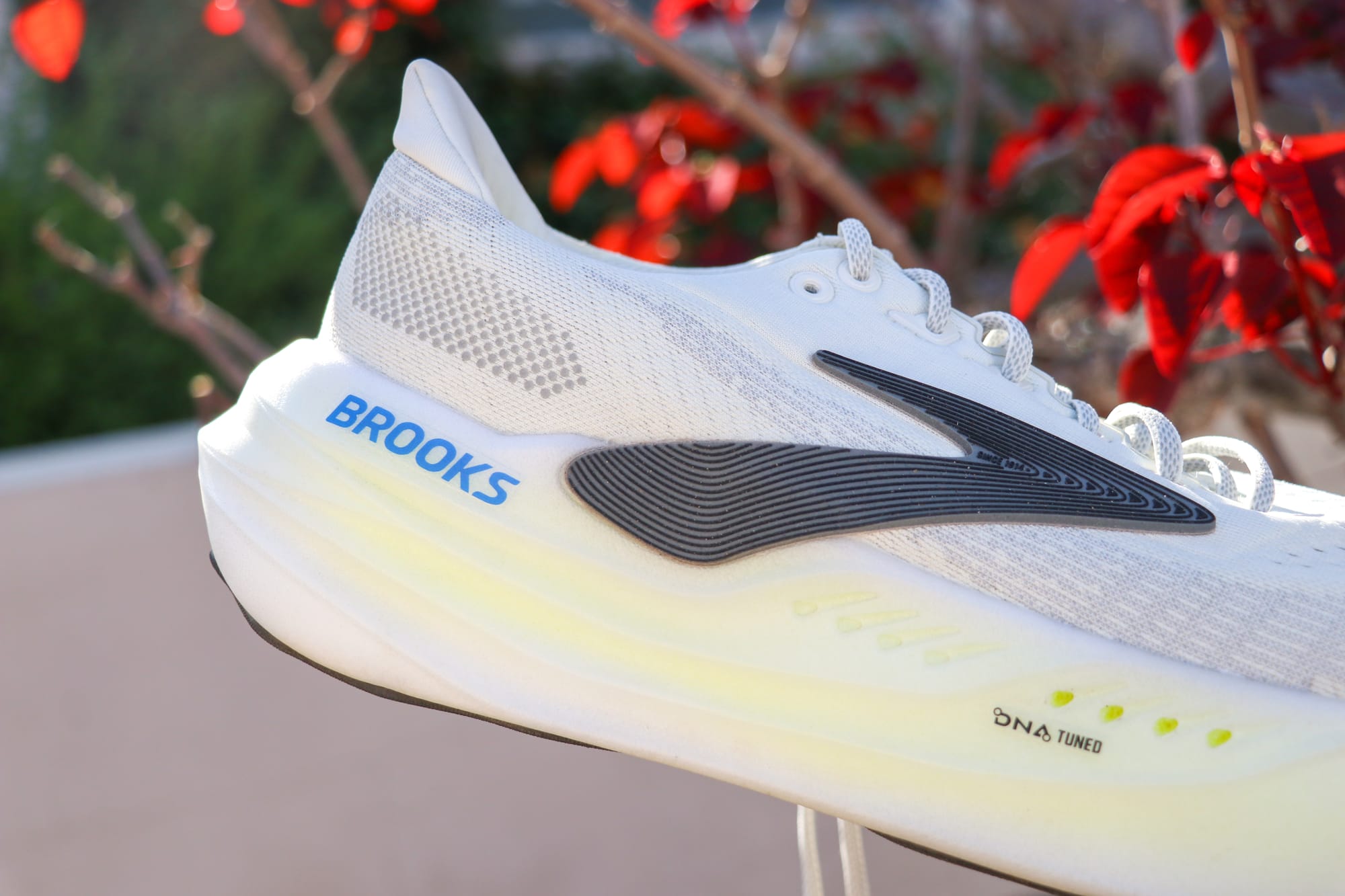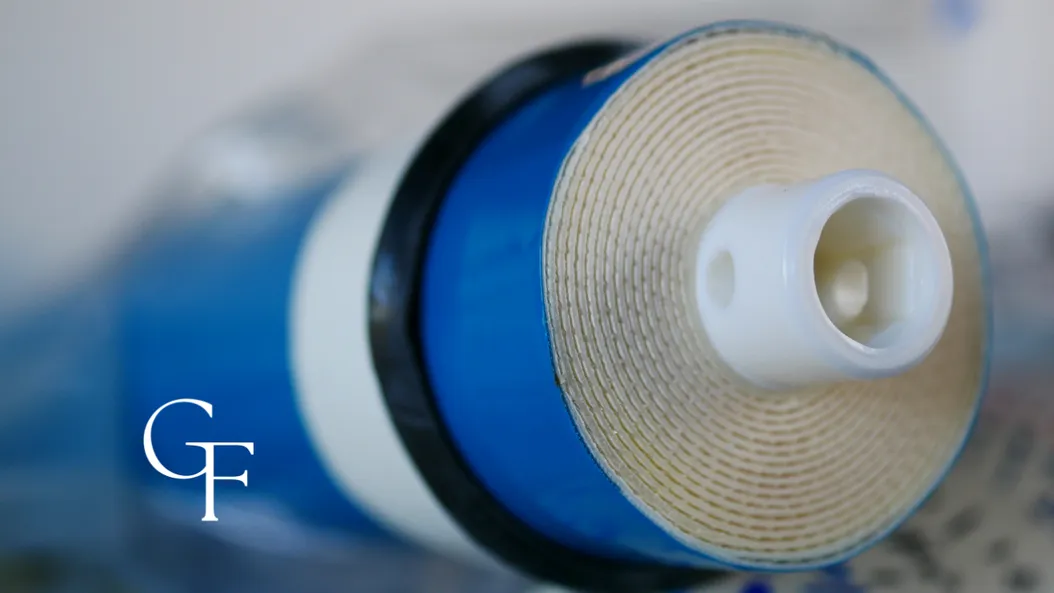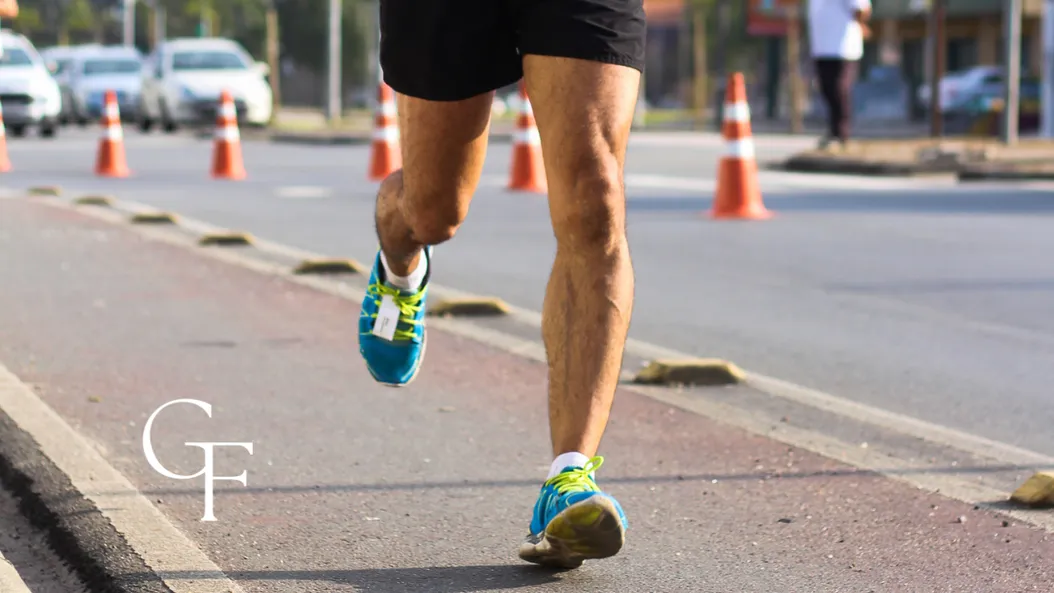
Introduction to Men's Running Shoes
The right pair of running shoes can significantly impact performance and comfort, with top brands like Asics, Brooks, Hoka, Saucony, and Nike offering a wide selection, including trail running shoes and stability shoes.
The best running shoes for men depend on factors like running style, terrain, and personal preferences, with some emphasizing a responsive feel and others prioritizing shock absorption.
Finding the perfect shoe involves considering key features such as cushioning, support, and durability, with many runners opting for men’s running shoes that offer a reliable grip and a dual-density midsole.
Whether you’re a long-distance runner or a casual jogger, investing in a good pair of running shoes is essential for comfort and injury prevention, with options ranging from ultra-lightweight racing shoes to well-cushioned everyday trainers.
Is There a Perfect Shoe?

There is no "magic" pair of running shoes that'll make or break your time; I'll say that upfront.
Yes, shoes matter and can make a difference, but only gradually. When you're aiming to PR by shaving precious minutes and seconds from your time—especially at an elite level—I would say that the shoes matter, but certainly not more than good old-fashioned training.
However, if you're trying to just run and finish a half or full marathon, especially your first one, then you can achieve a lot with little effort.
In most cases, what you train with is what your body will adapt to. Of course, if you've had any issues with your knees, ankles, or hips in the past, then more cushioning is often better. As the saying goes, "know thyself."
With all that said, I have learned a lot about selecting the right running shoes for the right job. If there's any valuable knowledge I could share with you about marathon training shoes, it’s the necessity of owning multiple pairs for rotation.
The Daily Trainer
These are your classic "do-it-all" running shoes, the ones you'll likely lace up the most for recovery "easy" runs and even your speed workouts. These shoes are your workhorse shoes, ready for anything at or below ten miles.
I suggest the following shoes for everyday training:
- Asics Novablast
- Brooks Adrenaline GTS
- Brooks Ghost
- Brooks Glycerin
- Hoka Clifton
- New Balance Rebel
- Nike Pegasus 41
- Saucony Guide
- Saucony Kinvara
- Saucony Ride
Tempo Run Shoes
These are your faster "speed" workout shoes that are lightweight and bouncy with an ideal amount of feedback. They often feature a nylon or carbon plate for increased reactivity, allowing you to pick up the pace during your faster runs.
I suggest looking into these shoes for tempo runs:
Max-Cushioned Long Run Shoes
These are your heavily cushioned shoes, designed to feel soft and plush, providing support for your legs. They are perfect for recovery and long runs.
I suggest considering the following shoes for your Max-Cushioned recovery run shoes:
- Asics Gel Nimbus
- Asics Superblast
- Brooks Glycerin Max
- Hoka Bondi
- New Balance 1080
- New Balance More
- Saucony Triumph
Racing Shoes
This last category includes premium-priced variations of running shoes that are carefully designed with performance in mind. These are the shoes you lace up when you're about to put in some serious work to "cook" some miles.
Often featuring carbon fiber plates for maximum feedback and the highest quality foam variations available, these shoes are designed for race day and the rigorous workouts aimed at achieving new personal records.
As mentioned, premium goods come at a premium cost, and these shoes are often priced between $200 and $250 (or sometimes more).
I recommend the following race-day shoes:
- Asics Metaspeed Sky Paris
- Nike Vaporfly
- Saucony Endorphin Pro
- New Balance Super Comp Elite Trainer
- Hoka Cielo X1
How Many Shoes Do You Really Need?
The straightforward answer is two.
The ambiguous answer that requires explanation is, "It depends."
Let me explain...
For those looking to run and complete a marathon, especially their first one, without strict goals, you really only need two pairs of shoes:
- One versatile daily trainer that is light and fast enough to serve as a tempo run shoe.
- One long-run shoe that provides ample cushioning to protect your legs during those lengthy runs for maximum mileage.
In fact, I ran the Rock n' Roll marathon with my wife in the Asics Superblast 2, which is a very lightweight Max-Cushion shoe. If you're not trying to go any faster than nine or ten minutes per mile, then I would say that any cushioned shoe suitable for long runs will work just fine for you.
In most cases, a super premium, carbon-plated racing shoe isn't necessary, so you can rest easy knowing you don't have to burn a hole in your wallet just to participate in the marathon.
At the end of the day, choose something that works well for YOU, aligns with your unique biomechanics and preferences, and looks cool, because cool running shoes are part of the fun (I think).
I suggest visiting your local running store (such as Road Runner) and having them perform a running analysis for you. They can then recommend some brands and types that're likely to match your preferences, so you're prepared for your marathon training.
Key Features to Consider
When selecting a running shoe, consider key features such as cushioning, support, and durability, as top brands offer a range of options to cater to various needs and preferences.
A good pair of running shoes should provide a reliable grip on the road, pavement, or trail, ensure a comfortable ride, and offer sufficient support for your running style, with factors such as heel strike, toe-off, and midsole support playing essential roles.
Look for shoes with breathable uppers, durable outsoles, and a responsive midsole for a smooth run. Also, consider the shoe's weight, flexibility, and water resistance, as many runners prefer shoes that strike a balance between comfort, support, and performance.
Choosing the Right Shoe

To choose the right shoe, consider your running profile, including your running style, terrain, and personal preferences, with factors like neutral pronation, heel strike, and running frequency playing a crucial role.
Try on several options and go for a run to ensure a comfortable fit and feel. Many runners opt for shoes with a reliable grip and a dual-density midsole.
Read reviews and consult with running experts to find the best shoe for your needs, with top brands offering a range of options to suit different needs and preferences.
Remember, the right shoe can make a significant difference in your running performance and comfort.
Maintenance & Replacement
Proper maintenance and replacement of running shoes are essential to extend their lifespan and prevent injuries, with many runners opting for shoes with durable outsoles and water-resistant uppers.
Replace your shoes every 300-500 miles or when you see significant wear and tear, with factors like heel strike, toe-off, and midsole support once again playing a key role.
Clean and dry your shoes regularly to prevent damage and odor. Many runners opt for shoes with breathable uppers and antimicrobial materials, so you may also want to consider this approach.
Consider rotating between multiple pairs of shoes to reduce wear and tear, a practice many endurance athletes strive to do as often as possible.
My Current Rotation for Marathon Preparation
As I write this guide, my wife and I have just finished our very first marathon in San Diego, California. I prepared a separate guide specifically for first-time marathon runners.
Currently, I'm preparing for my second marathon and my first solo race, with the goal of finishing in 3.5 hours over the 26.2-mile distance. So, I’ve chosen my shoes for the first few months of training, which I'll share more about below.
My "Do-It-All" Daily Trainers (Hoka Clifton 10)
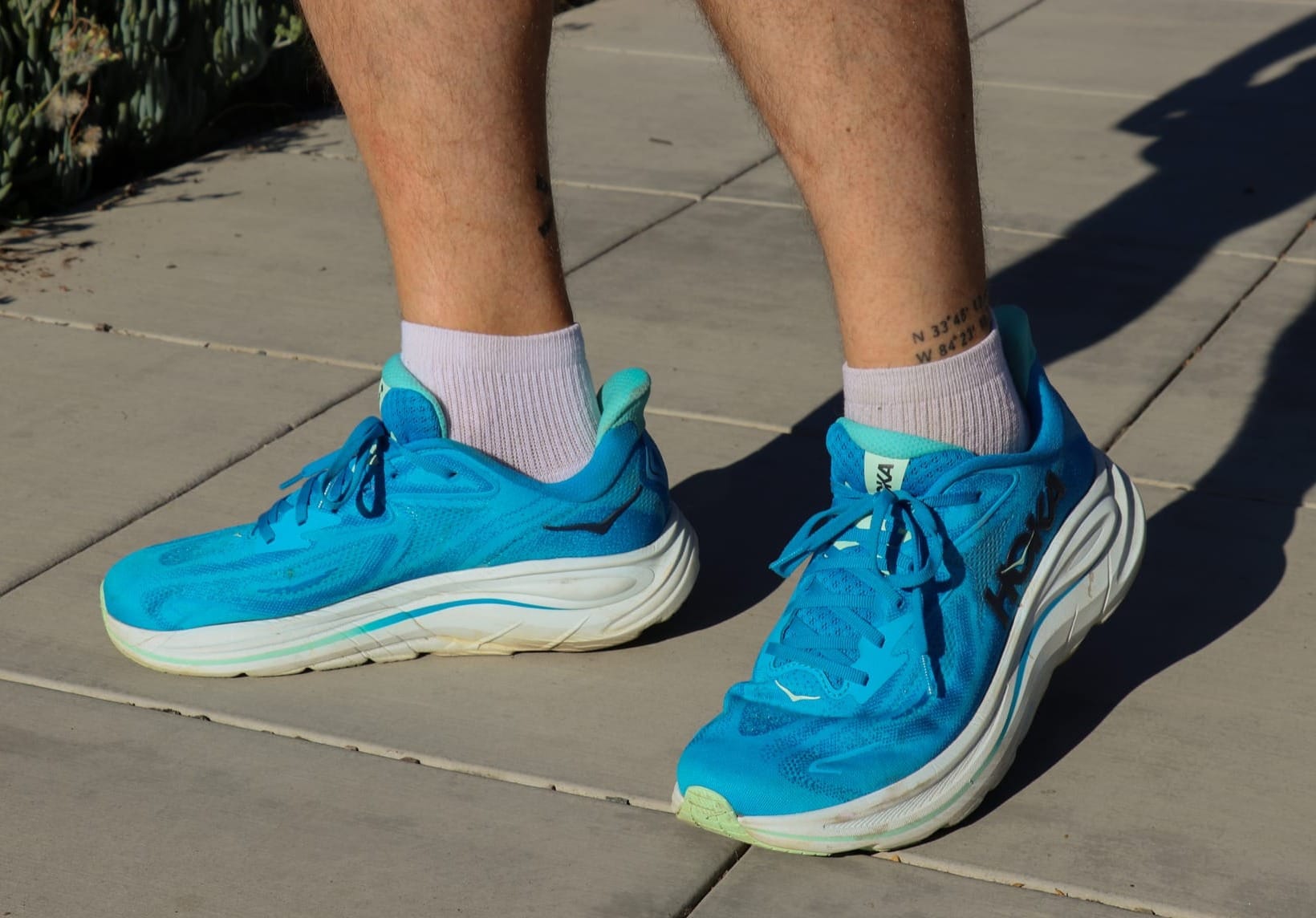
Hokas are known for their plushness and comfort, and the Clifton model is the most popular shoe in Hoka's lineup of running shoes.
With the Clifton 10, Hoka has increased the stack height by 10mm at the back of the shoe, now reaching a total of 42mm with an 8mm drop. This makes the Clifton 10 more of a max-cushioning trainer than the previous Clifton 9 model, which had a 32mm stack height and 5mm drop.
With the increased stack height and overall cushioning, the weight has also gone up compared to the previous model.
Personally, I need that extra cushioned daily trainer due to my heavier 195- to 200-pound frame and to protect my knees, which have both undergone surgery. In my opinion, the Hoka Clifton 10 is a no-brainer, and that stunning Skyward Blue colorway is both fun and stylish.
My Lightweight Tempo Running Shoes (Saucony Endorphin Speed 5)
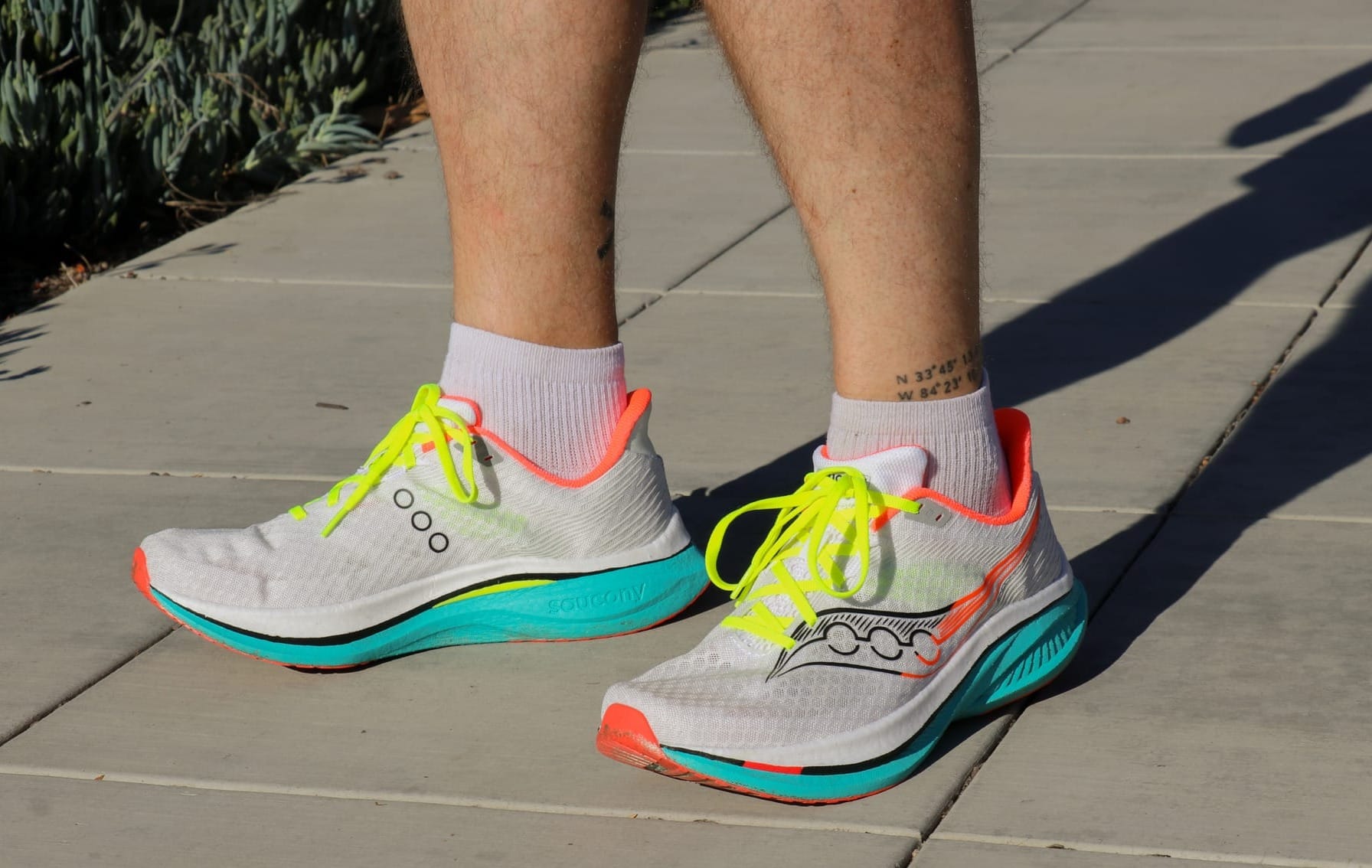
I wasn't familiar with Saucony before Nick Bare introduced me to the Endorphin Speed lineup by way of his running videos and podcasts.
Although he isn't a fan of the 4th version of the popular shoe (I didn't think it was THAT bad), there's no denying that the Endorphin Speed 3 was an excellent mix of a daily trainer and lightweight design, making it well-suited for tempo speed workouts.
The newest Endorphin Speed 5 from Saucony feels more like version 3 than version 4, and that's a good thing in my opinion.
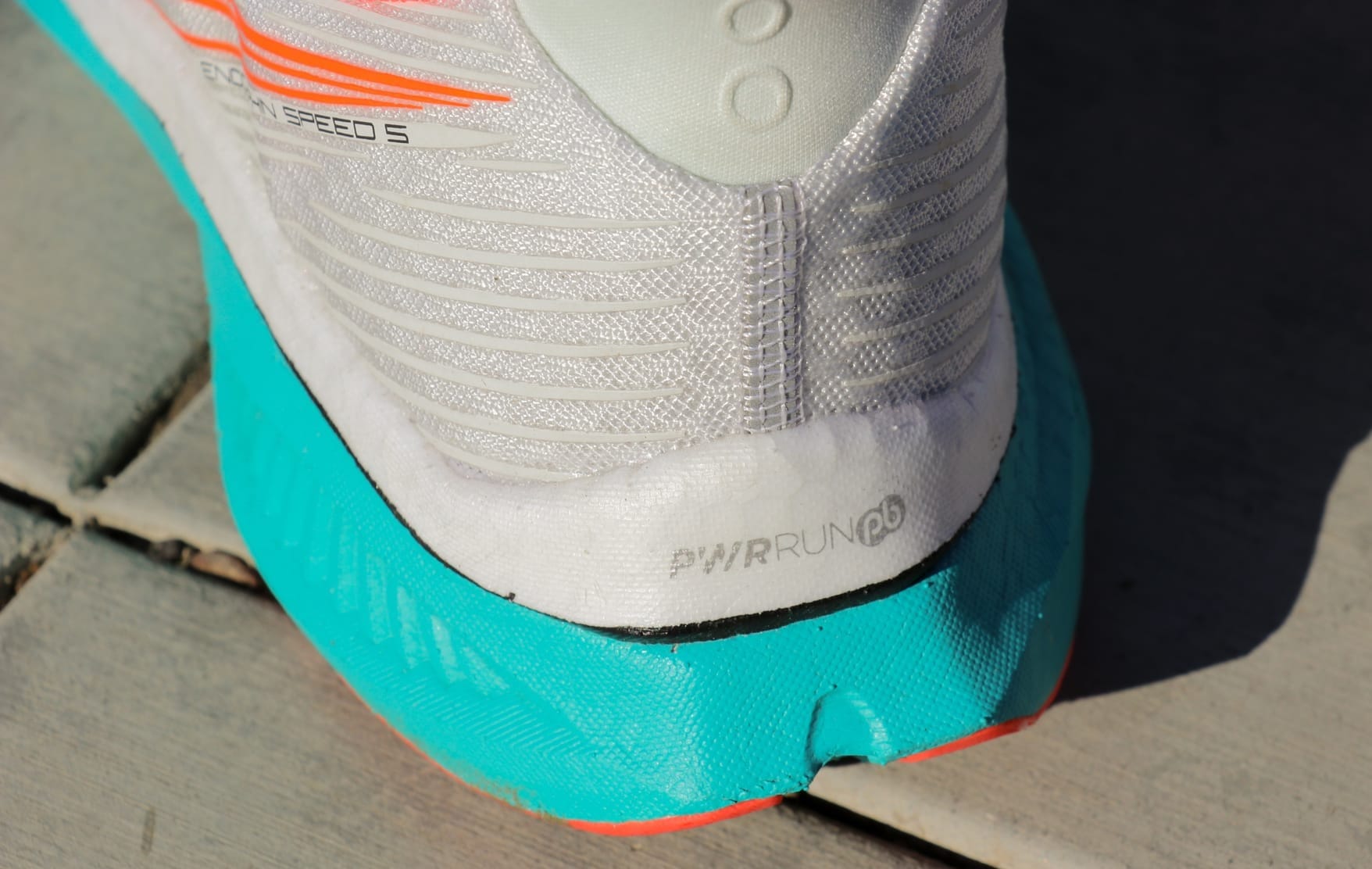
With an incredibly lightweight construction, winged nylon plate, and Saucony's signature PwrRun PB foam, this is my top choice for both faster runs and a smooth ride, thanks to its cushioned yet incredibly lightweight bounce.
And that "mutant" colorway is just sick... am I right?
My Max-Cushioned Recovery Daily Trainers (Brooks Glycerin Max)
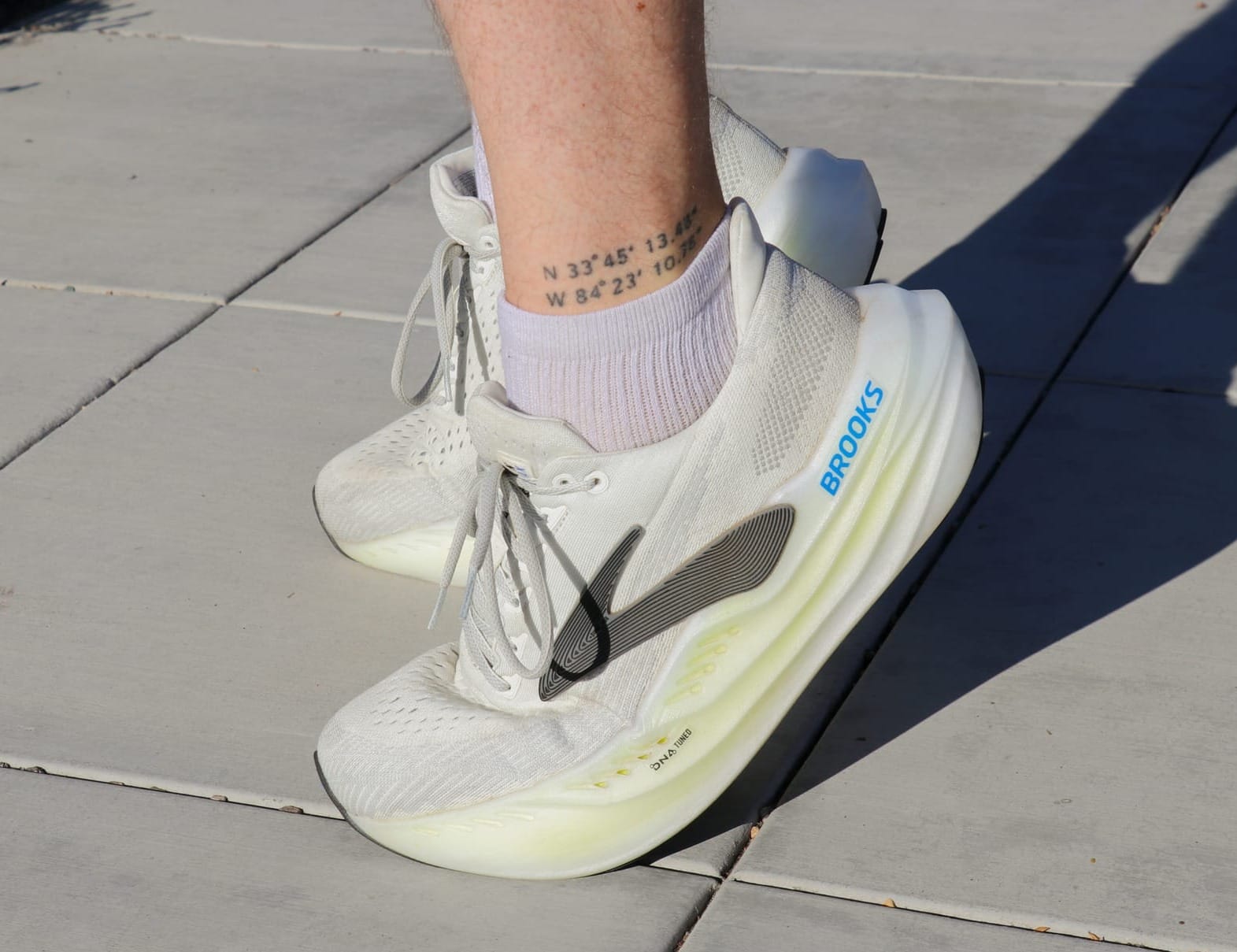
Brooks is one of the most popular shoe brands in America right now, and for good reason. They are consistently comfortable and often very affordable.
With that said, the Glycerin Max has been marketed by Brooks as "the shoe of the future" due to its uniquely constructed DNA Tuned, nitrogen-infused foam, all in a massive 45mm stack height in the heel with a 6mm drop through the forefoot.
This is a chunky max-cushioned running shoe if there ever was one!
I'll be honest, this talk about nitrogen gas being used to make new foam, along with various air bubbles in the foam, sounded like a bunch of science mumbo-jumbo to me... but I have to say, these might be my favorite men's running sneakers right now, period.
My Carbon-Plated Shoes (New Balance FuelCell SC Trainer)
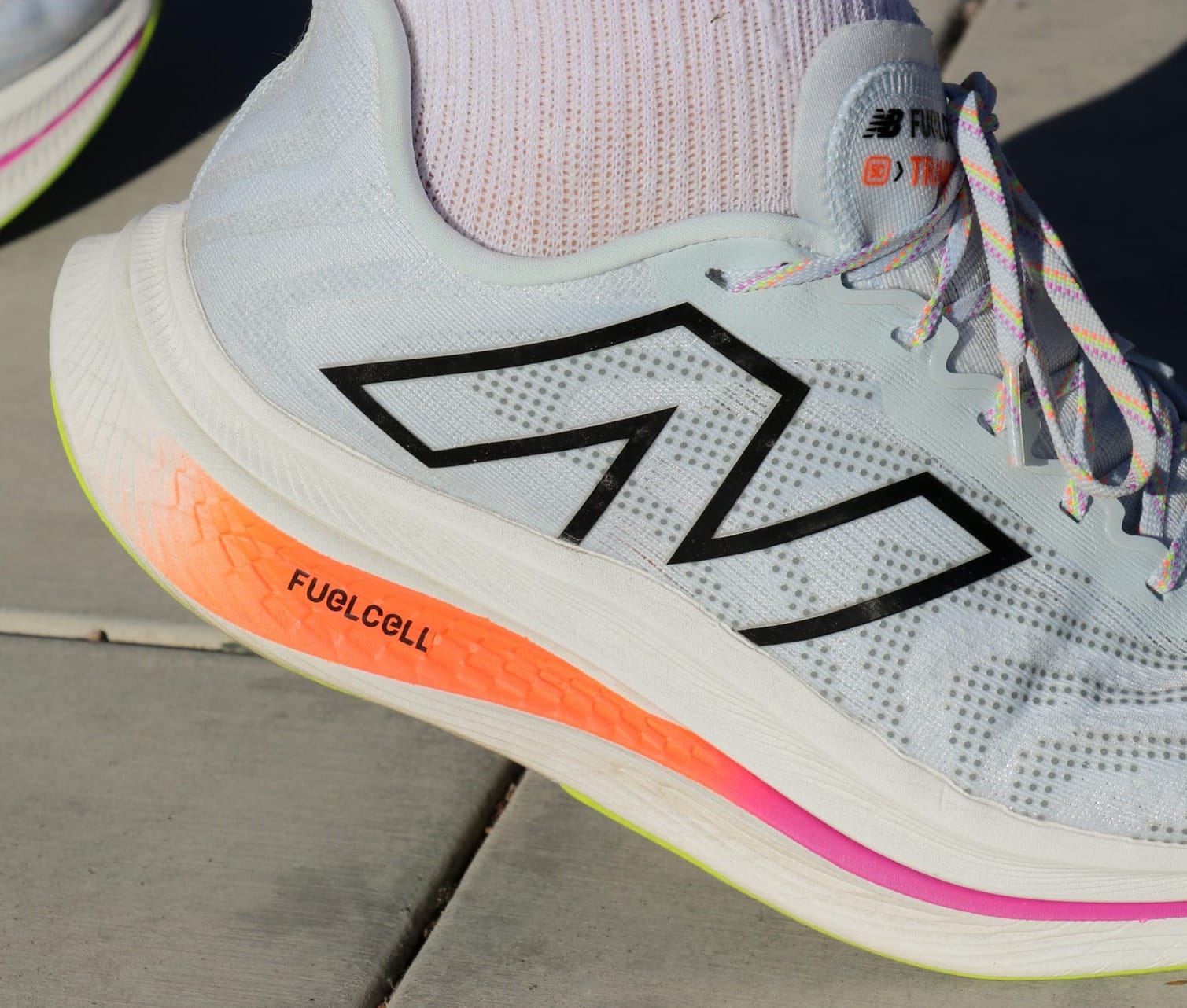
These shoes are my first pair with a carbon plate, and they feel amazing.
They're a bit heavier, but I can still move quickly when needed. New Balance's FuelCell foam is plush (but not too soft), and their energy arc plate provides the feedback I expect from a great race day shoe.

I still haven't decided if I want to keep these shoes for the actual marathon race in about six months, but for an 8-mile race or half-marathon, they will be excellent.
Admittedly, these are an older version of the New Balance SC Trainer (specifically version 2). But I love them!
Best For Off-Road Running (Brooks Caldera 8)
If you're a trail runner looking for a stable, durable, and comfortable ride, the Brooks Caldera 8 is an excellent choice, featuring Brooks' signature DNA Loft nitrogen-infused foam and extra cushioning designed for ultra-marathon runners who enjoy the outdoors.
Admittedly, I'm not a big trail runner (yet), but if I needed a durable pair of stability running shoes, these are hard to beat at $150. Oh, and they're certified carbon neutral.
If I Could Only Choose ONE Pair of Running Shoes...
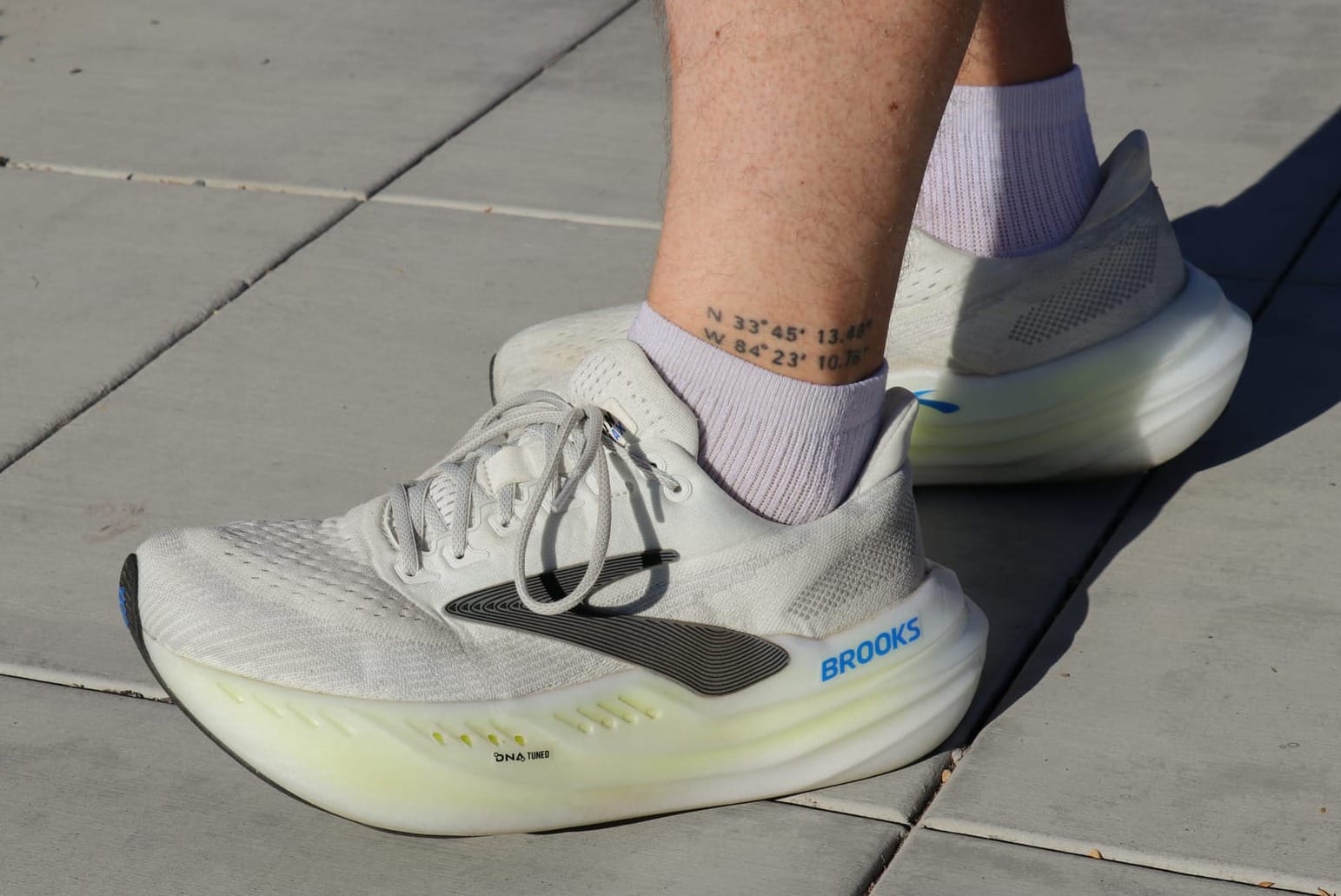
For $200, these aren't as affordable as many other options from Brooks, but if I had to choose one pair from my current four-shoe lineup, I would pick these and would even happily run my next marathon in them.
If you're looking to start running and want a reliable pair of shoes that will protect your legs during training and feel comfortable when you pick up the pace, then the Brooks Glycerin Max is the perfect choice.
No, they aren't as light and fast as an Endorphin Speed 5 or nearly any carbon-plated race-day performance shoe, but they are definitely capable of handling a half or even a full marathon.
Find The Best Men's Running Shoes for YOU

A lot of information has been shared about various kinds of shoes throughout this article, including the pairs I'm wearing and training with right now.
I hope this guide to the best men's running sneakers has helped inform you about what's available.
Ultimately, a great pair of shoes suitable for daily training, offering sufficient cushioning and providing support during competitive runs while you prepare for your next race, will depend on your personal preferences.
So what are you waiting for? Get out there and give it your all! Remember to train hard, but always prioritize safety.


